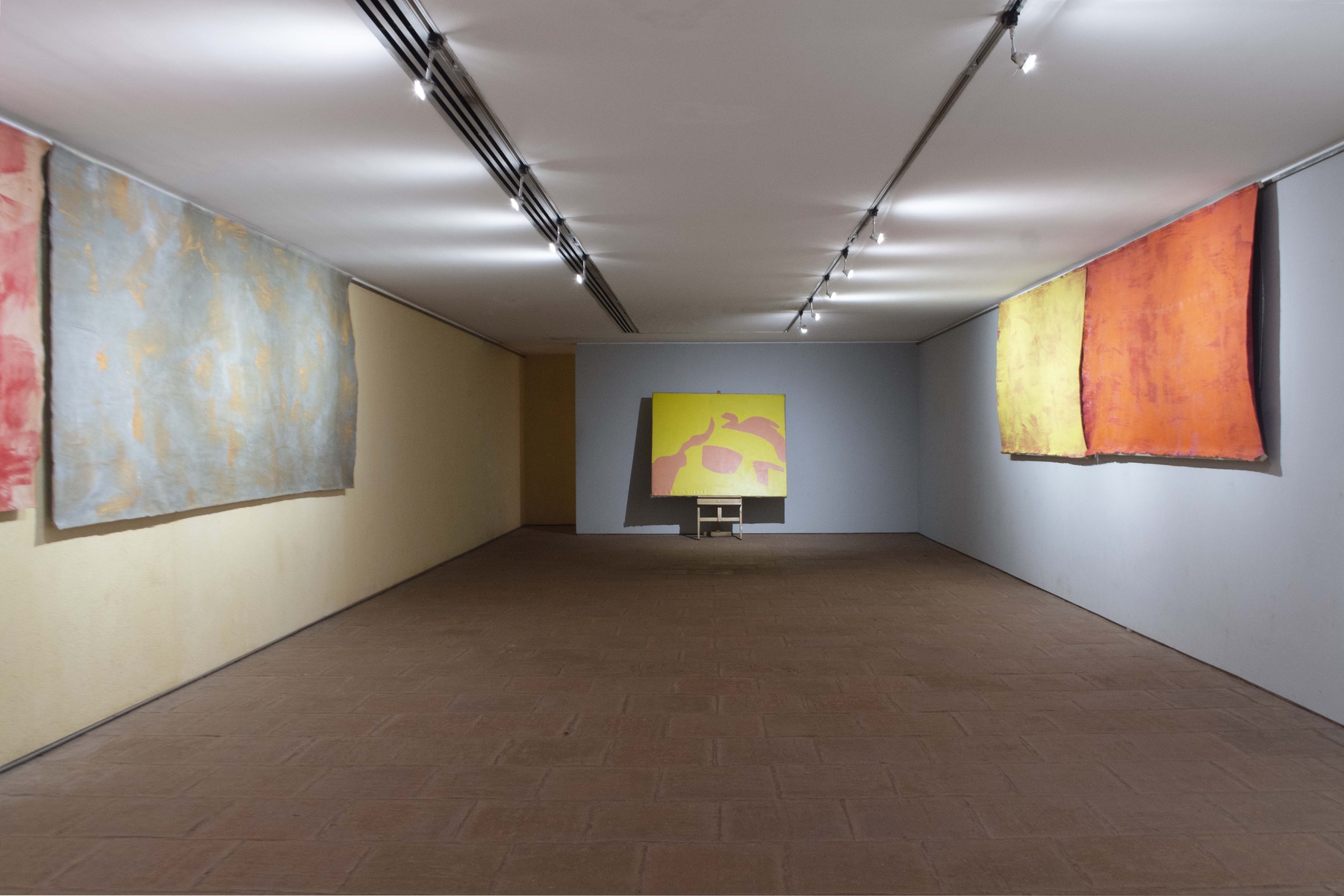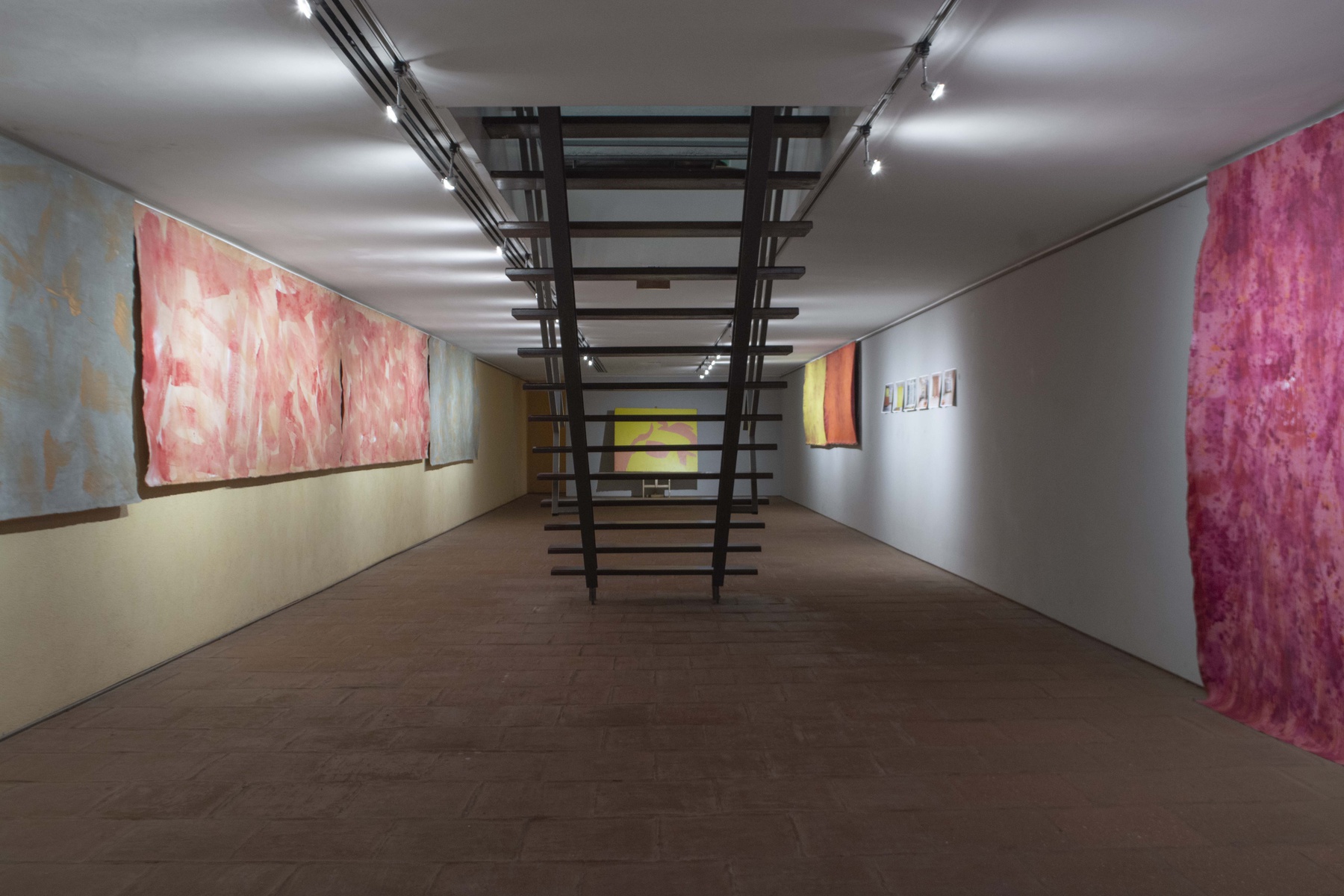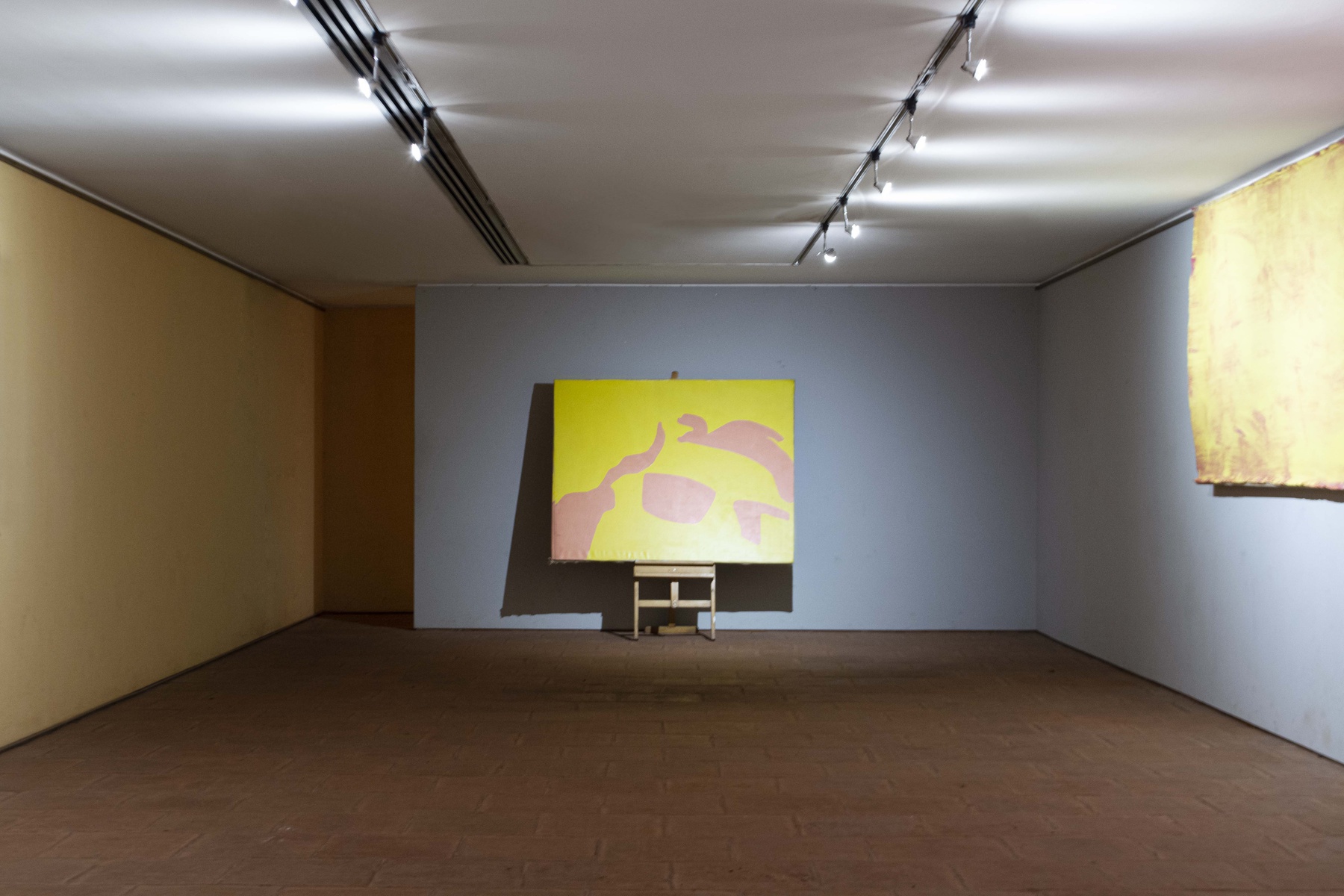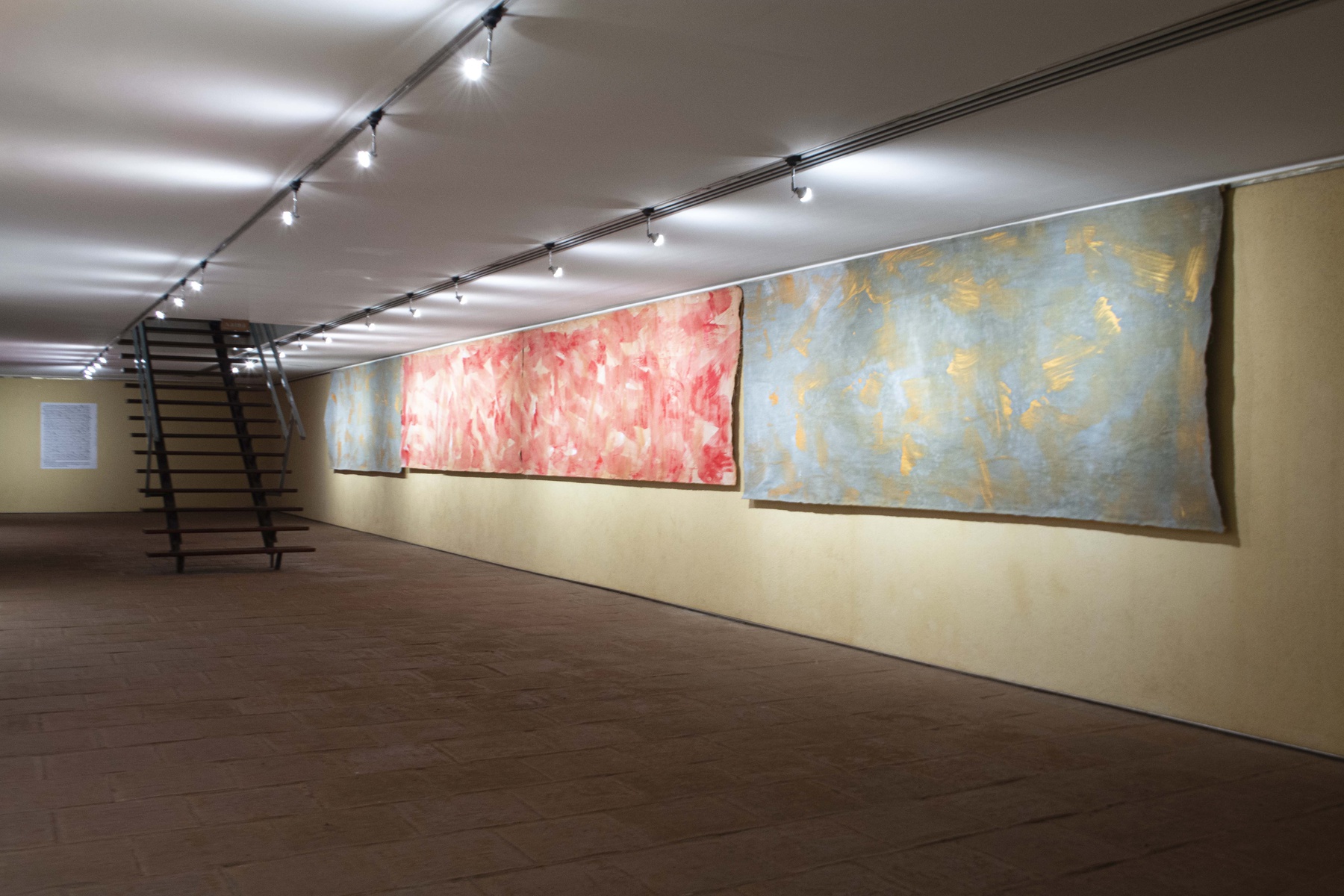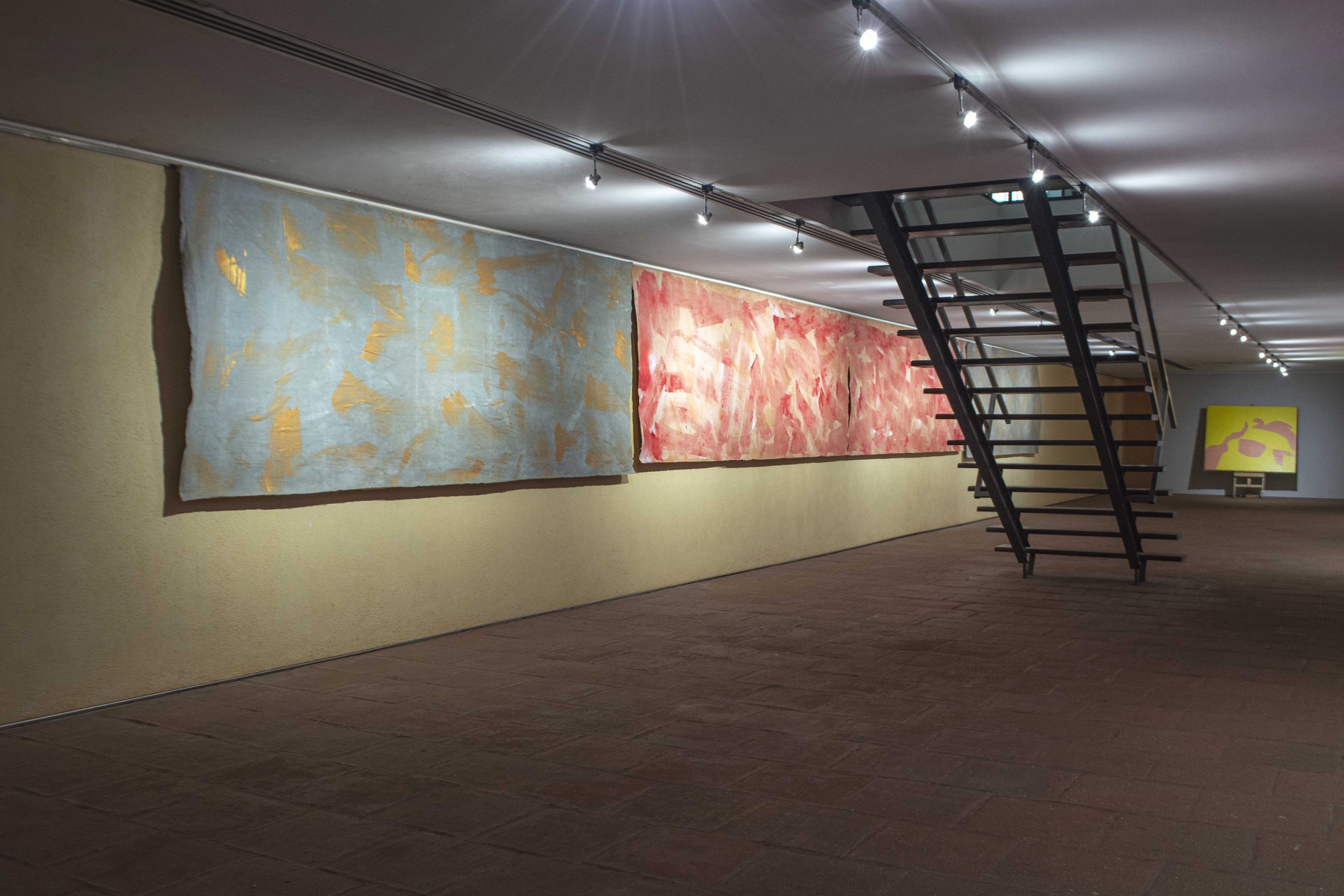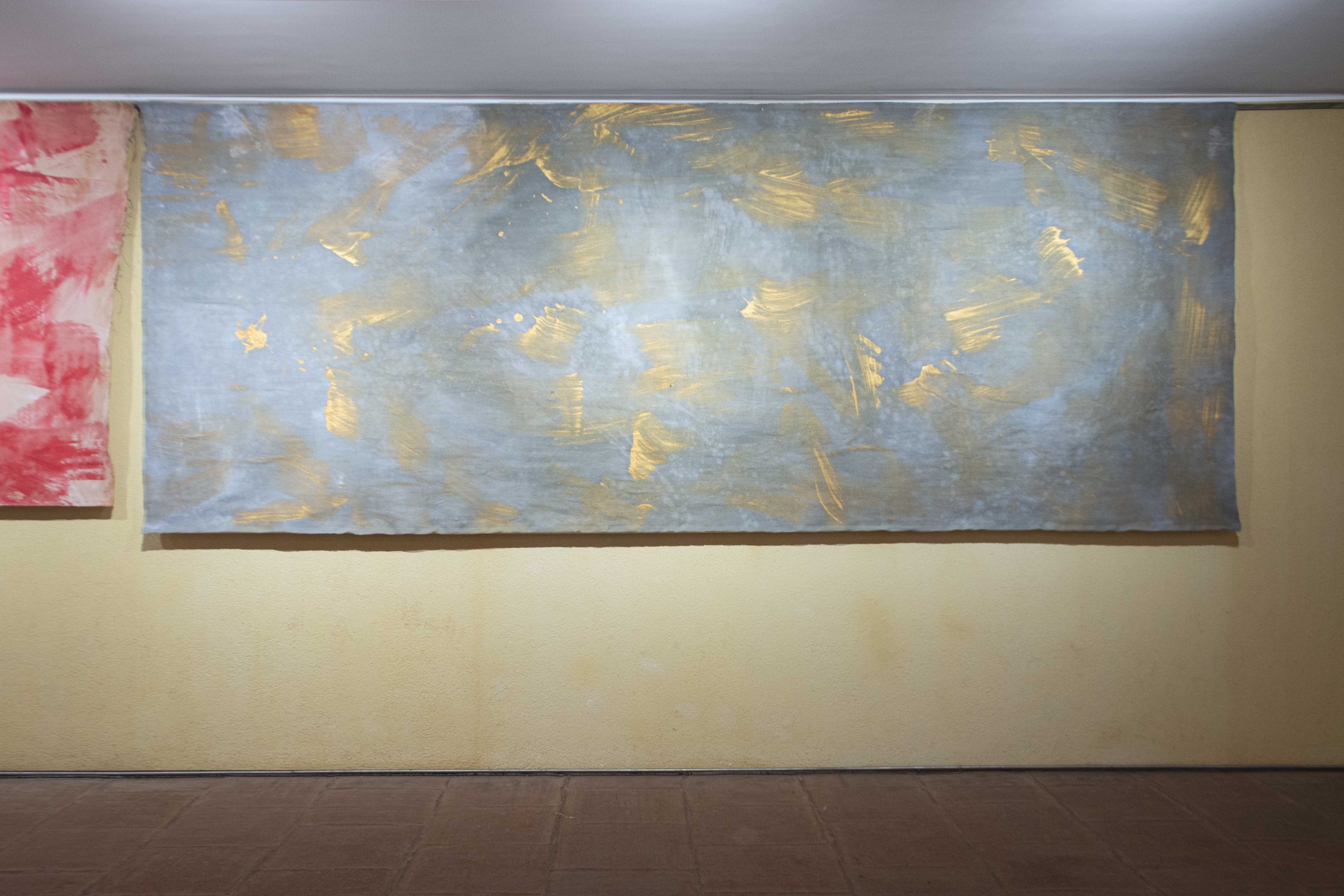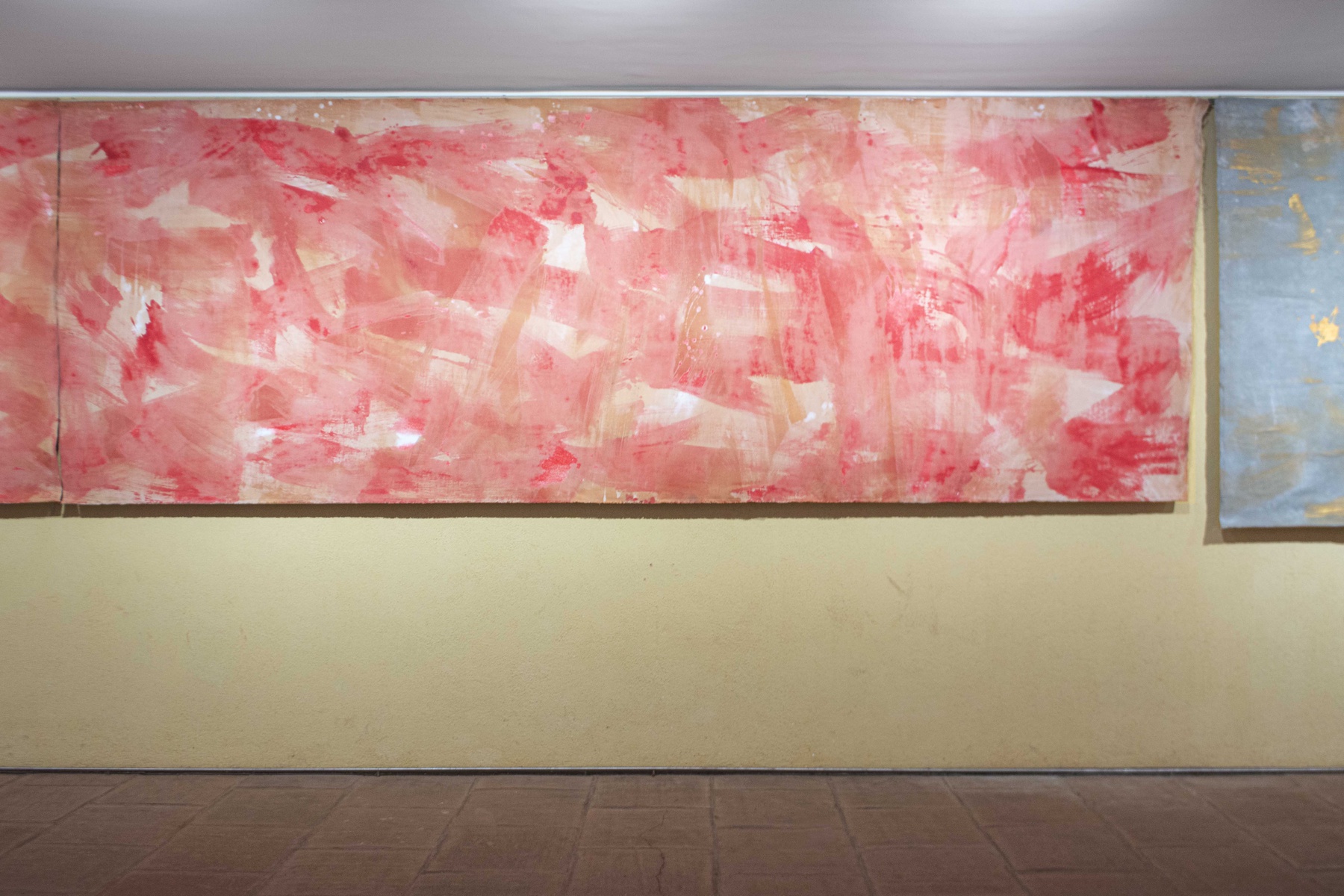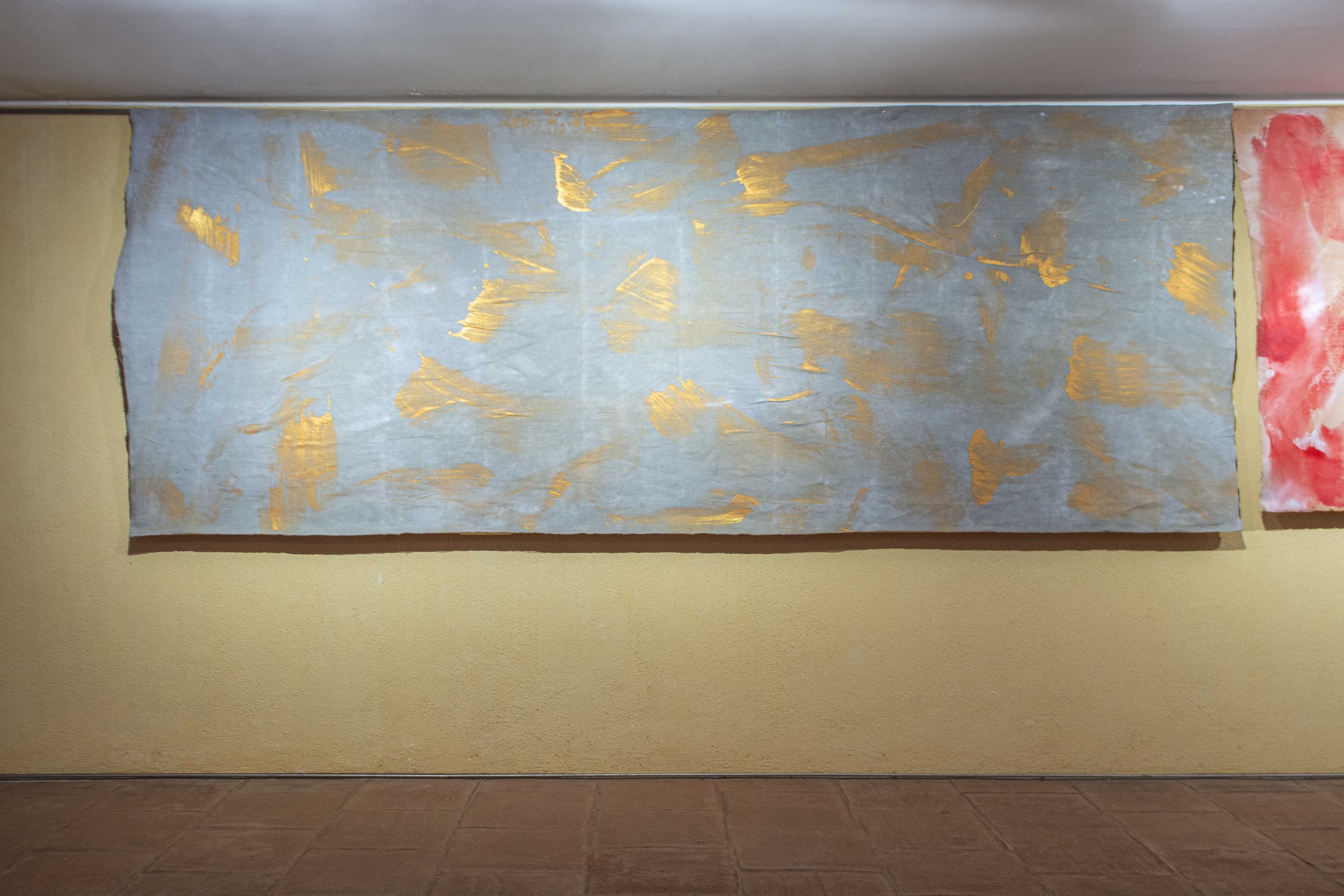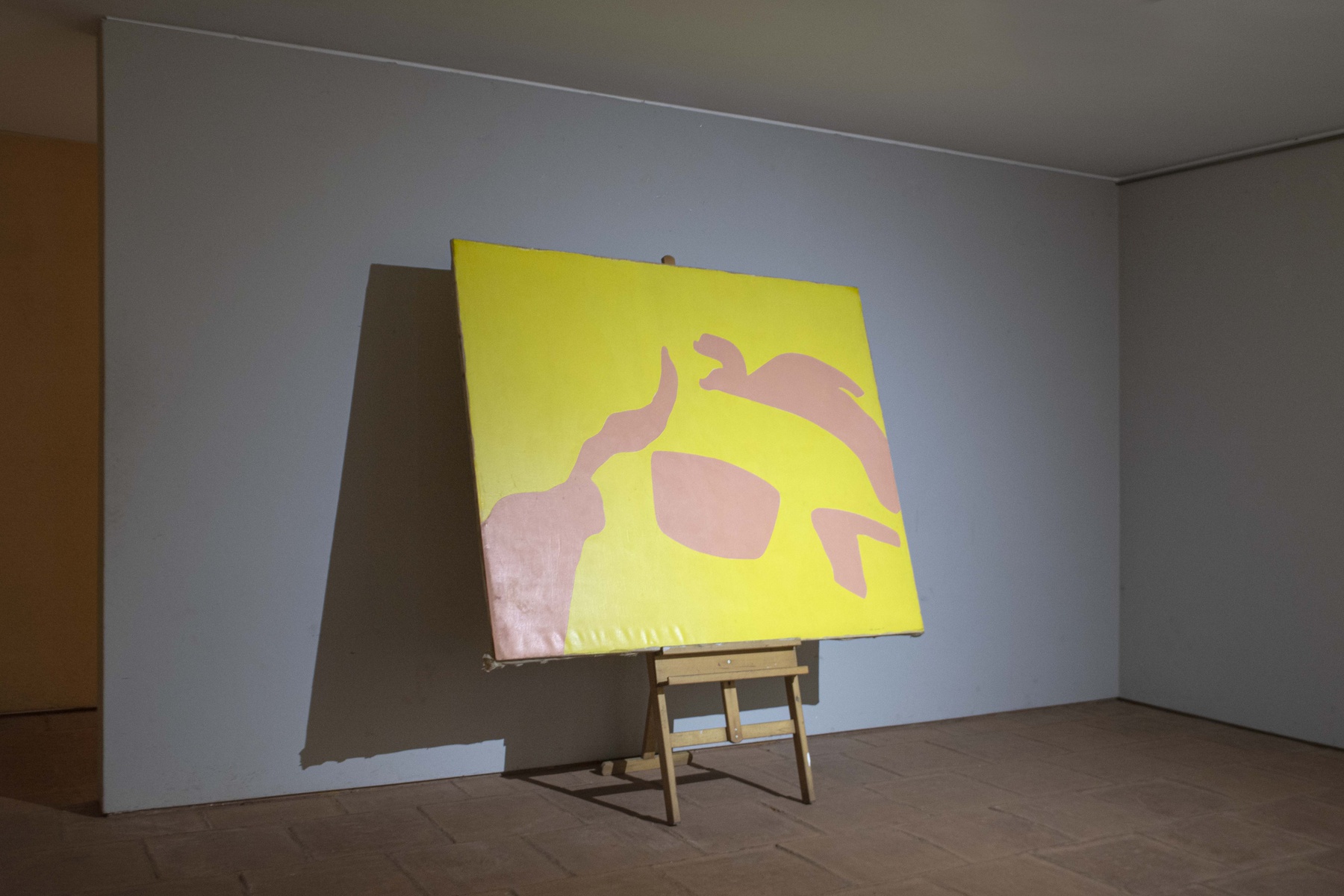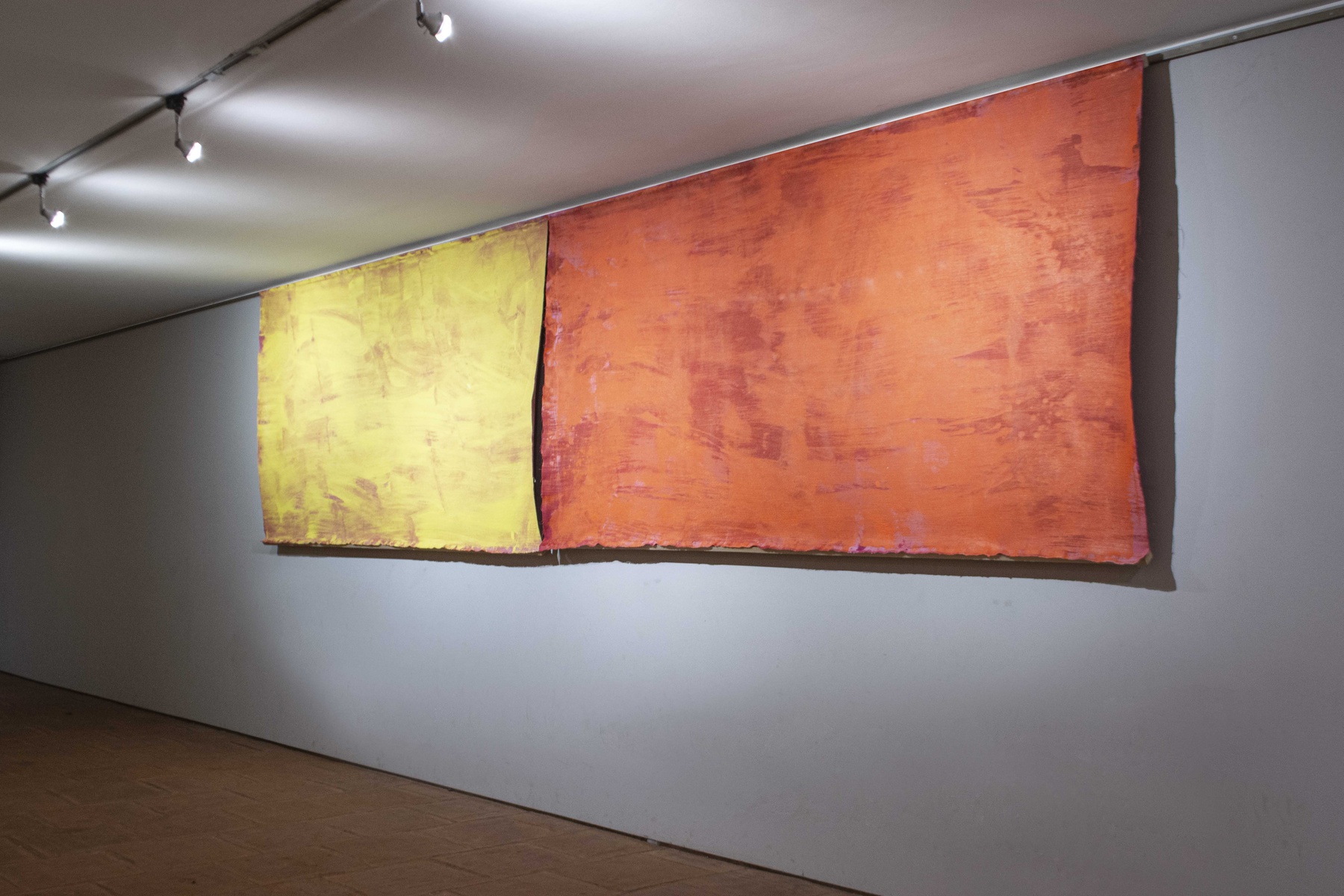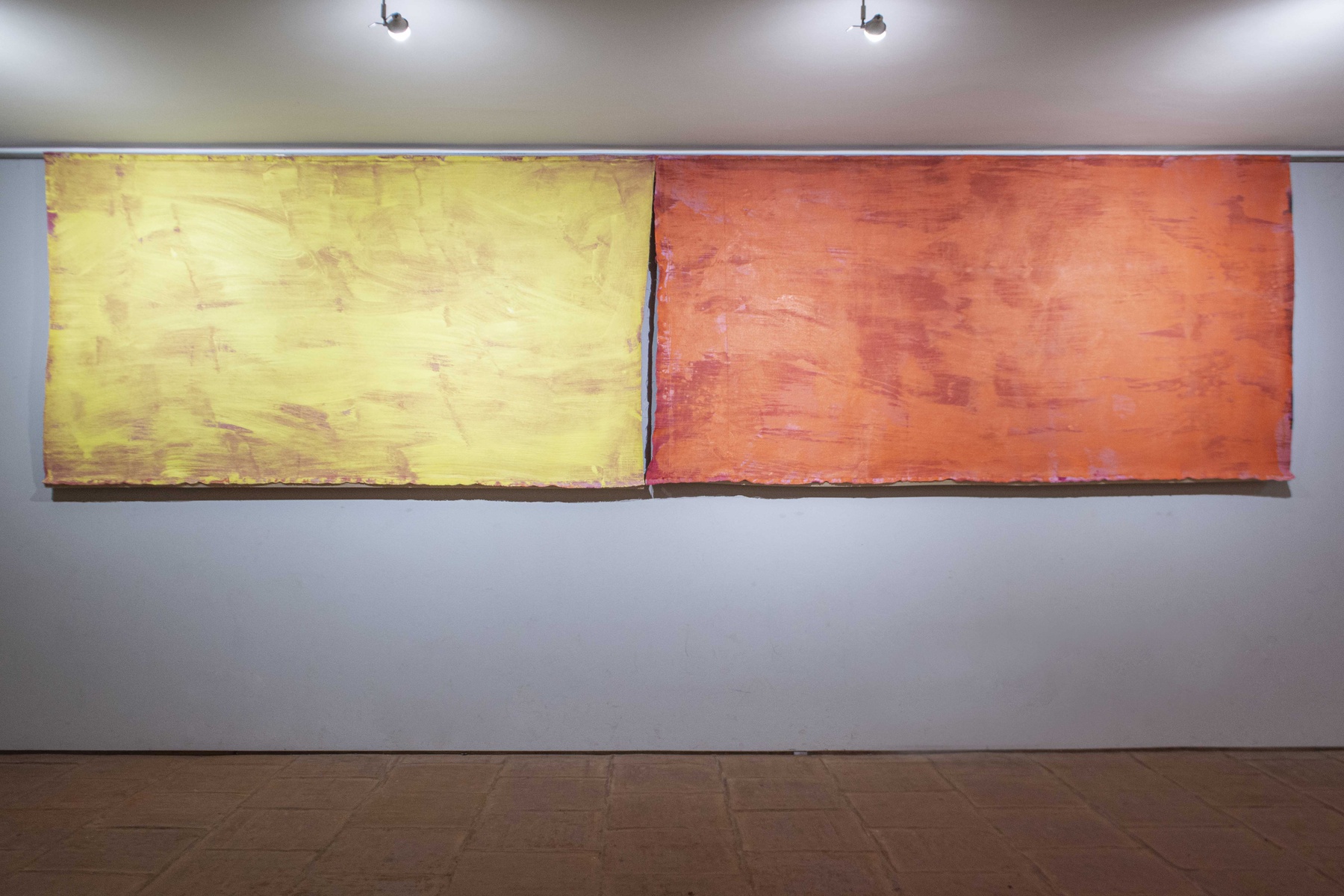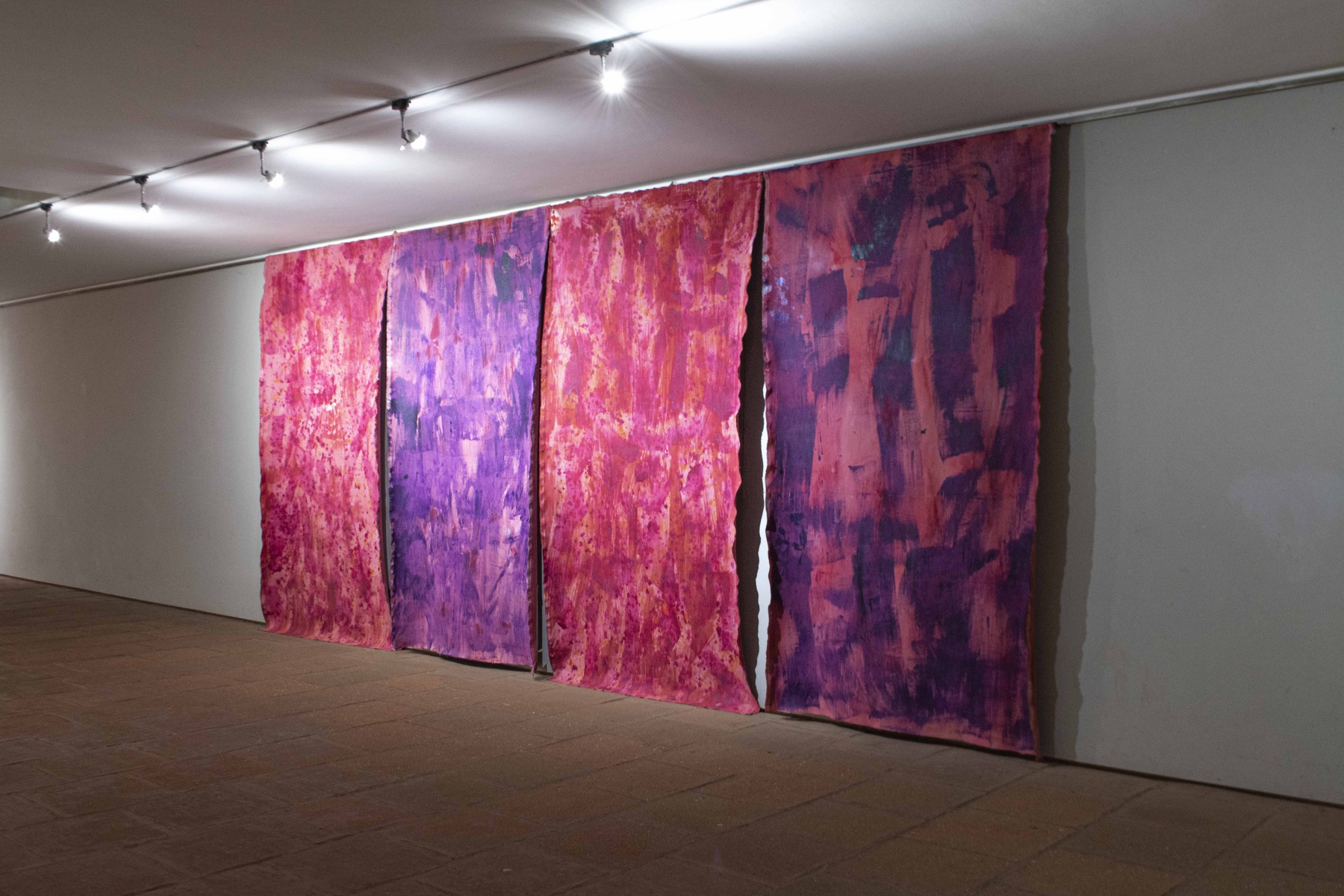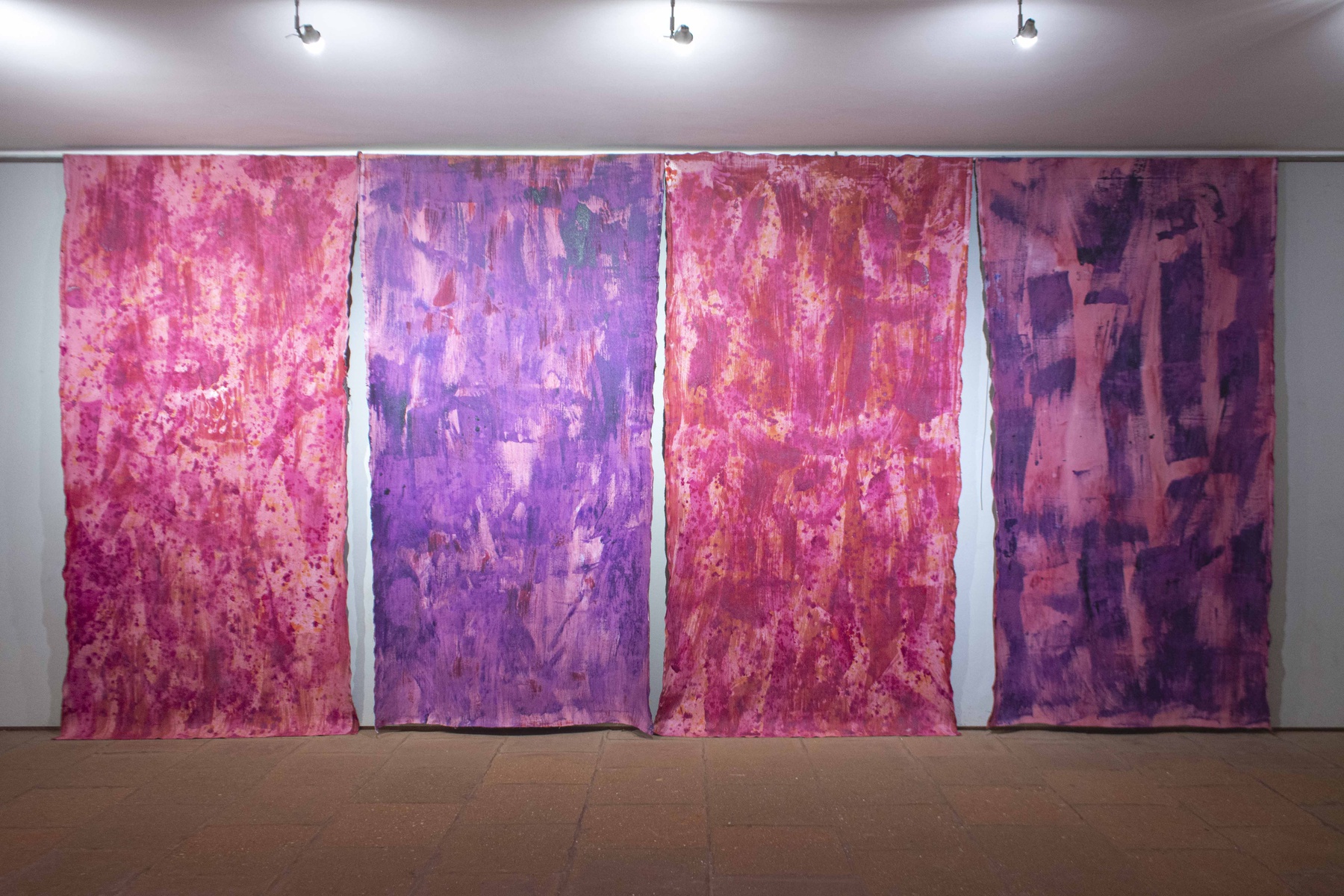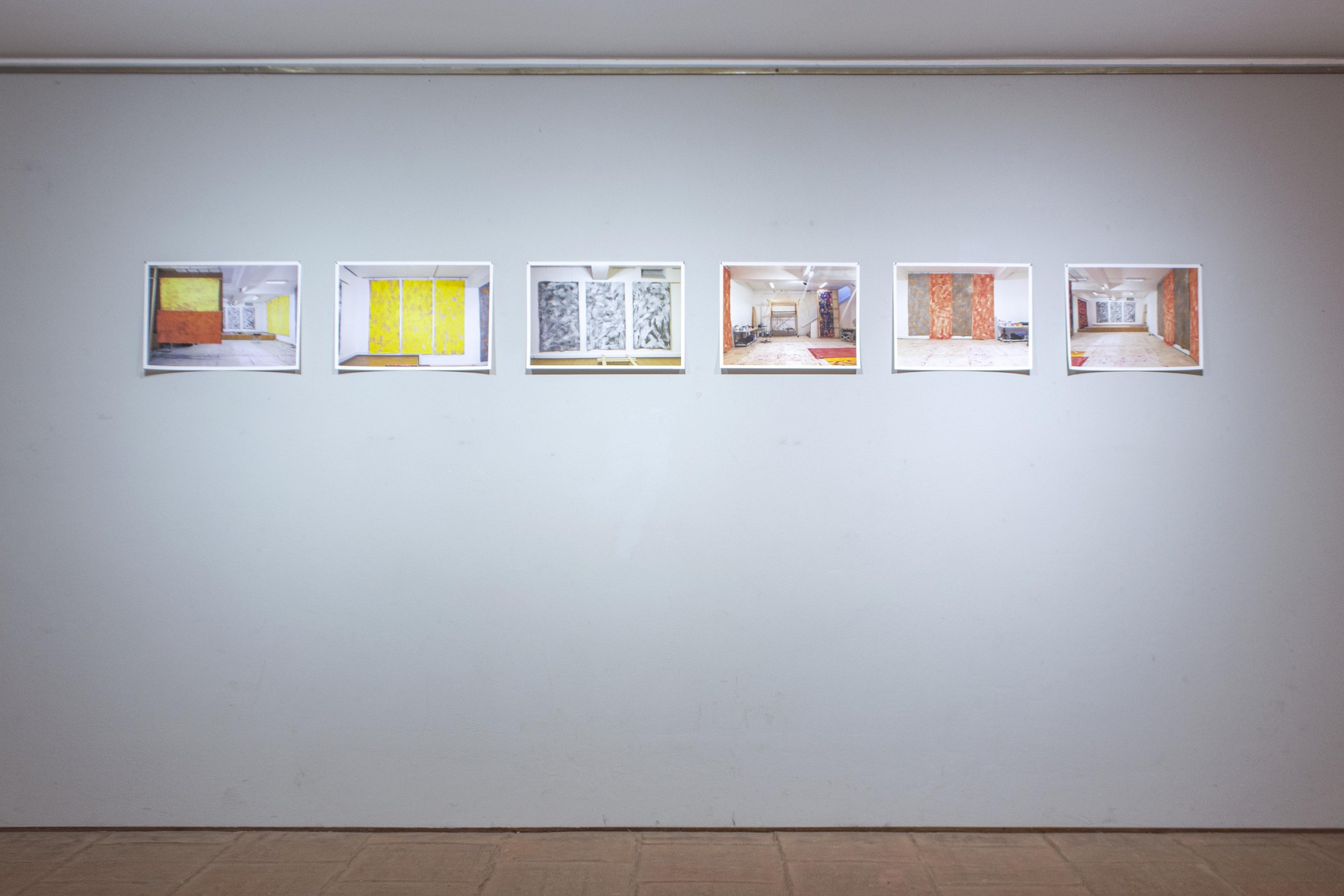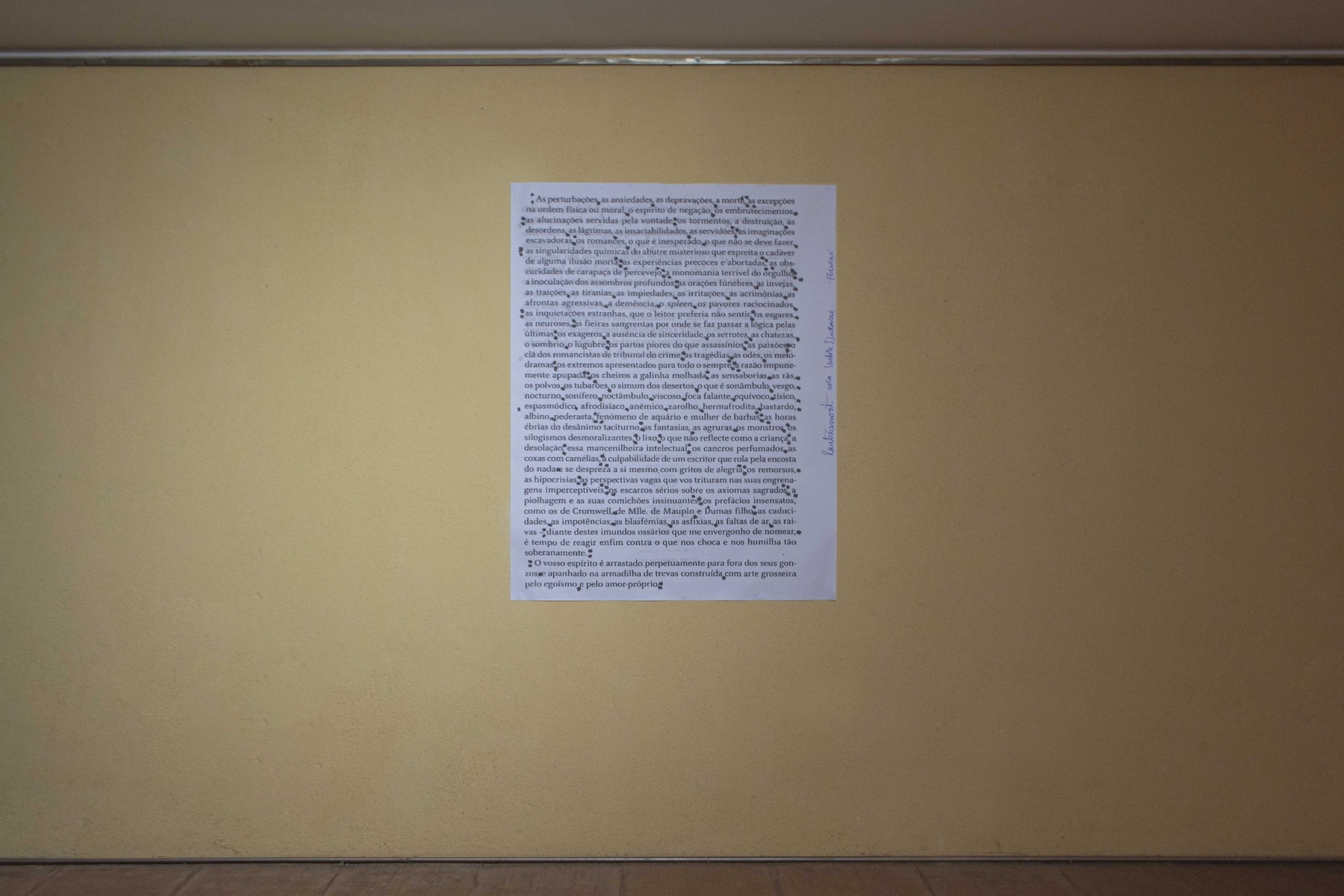Moral of the Story
Exhibition, Outside
12 Sep – 25 Oct 2020
Opening
Saturday, September 12, 16:00
Free admission
The exhibition "The moral of the Story", by Vítor Pomar, marks the artist's return to painting. Composed of large canvases and some photographs, the show is inspired and breathed by the "Vimalakirti Sutra", in which this layman explains that his illness is that of all sentient beings, also defending the need for a sick bodhisattva to know his own illness - in this learning, the importance of both wisdom and method is emphasized. The text in question, presumably composed in the 2nd century, intends to claim the thesis that all dichotomies are overcome by emptiness, a fact sustained by Vimalakirti's final silence, when invited to speak.
Maldoror Sutra
Óscar Faria
Upheavals, depressions, the pandemic, cats, catalogs, exhibitions, lies, parasites, friends, dinners, the anxiety of separation, the anguish of the influence, cycles, incense, the half beach, the big beach, pools, masks, hand sanitizer, the news, the selection, the commissions, books, emmanuel carrère, zadie smith, hillary mantel, the new london jazz, the garden of campanhã, flowers, songs, succulents, the authority, whimpers, silence, 4’33’’, the changes, the opinions, the poetry, isidore ducasse, white wine, transfers, the order, the return to painting, vimalakirti nirdesa sutra, the messages, the mania of persecution, the treatises, lyric poetry, Homeric poems, insults, generosity, expulsions, casa das artes, sismógrafo, silkscreens, david hinton, norman fischer, competitions, travels, loves, paranoia, crying, laughter, prehistory, hand washing, hiking, landscape, portraits, soundwalk collective (with patti smith), the heart sutra, cemeteries, Italian butter, regenerative agriculture, post offi ce, the doctoral thesis, payments, social security, obsessions, silencing, exploitations, plagiarism, virtues, moby dick, sleepless nights, lost mornings, commitments, sylvain tesson, Japanese noise, profi ts, losses, toys, joy, letters, obligations, rehearsals, dzogchen, ch'an, ocean vuong, eileen myles, the name of the trees, vows, calendars, annoyances, arrogance, immaturity, vegetables cinema sessions, rich clowns, poor clowns, poor wretch, the homeless, the ignorant, the clever, the smart, the sneaky ones, the interested ones, the climbers, yvon chouinard, amy hollowell, keith downman, seagulls, albatrosses, swans, zazen, bodies, bonelli's eagle, trawlers, valentin silvestrov, sofia gubaidulina, éliane radigue, antena 2 radio channel, dives, shadows, acquisitions, tempers, abuses of trust, manipulations, yin-yang, i-ching, suicides, homes, mbappé, taremi, montages, jars, barrels, the grass, the falls, unstretched canvases, printing companies, accusations, omissions, fog, sea air, the red fl ag, ice creams, chocolates,pills, exams, errors, dictionaries, pronunciation, translations, guided tours, prizes, juries, drinks, precarious workers, subventions, nepotism, fears, parties, wills, lotus sutra, commerce, vultures, moral of the story, wreaths, w.h.o., zeitgeist, busoni transcriptions, interviews, caesuras, censorships, hospitality, late night tales, burial mixtures – it is time to name not only what shocks and humiliates us so sovereignly, but also what feed and make us live so intensely.
Óscar Faria
ANIMALITIES AND OTHER BOTANIES
Cycle of exhibitions
Th e cycle “Animalities and other botanies” aims to bring to the forefront a reflection on how art has been creating new spaces for the discussion, for the dialogue between nature and culture, for the encounter between species, including in this proposal, among others, the ideas of Donna Haraway, Timothy Morton, Bruno Latour, Paul B. Preciado, Edward Osborne Wilson, Henry David Thoreau, and the poets W.S. Merwin and Gary Snyder and his “deep ecology”, who wrote in his book The Practice of the Wild: “Thoreau says ‘give me a wildness no civilization can endure’. That’s clearly not difficult to find. It is harder to imagine a civilization that wildness can endure, yet this is just what we must try to do. Wildness is not just the ‘preservation of the world’, it is the world. Civilizations east and west have long been on a collision course with wild nature, and now the developed nations in particular have the witless power to destroy not only individual creatures but whole species, whole processes, of the earth. We need a civilization that can live fully and creatively together with wildness.”
Vítor Pomar has been a prominent figure in the Portuguese art context since the 1970’s. His conceptual approach bears influence of Budhism, specifically Budhist meditation and the spiritual at large. Although rooted in the medium of painting, the work of Vítor Pomar brings together a multitude of artistic approaches, crossing painting with the experience of drawing, photography and film. The conceptual unity of his work is thus continuously put in question by the diversity of media, language and the works’ materiality, which are in permanent flux.
The work of Vítor Pomar emerges from reuniting seemingly dispersed experience inscribe in daily life, which through a diary-like method, based on fragmentation, observation and creation of images, capture the artist’s interest in the conceptualisation of ideas connected with the subject of absolute existence. By the immediacy of his pictorial gesture, the Surrealism of his drawings, or the filter of reality constituted by his photographs, Pomar questions our relation, understanding and experience of time, place and being.
The work of Vítor Pomar (1949) has been exhibited at the Fundação Calouste Gulbenkian, Lisbon, Chiado 8 Arte Contemporânea, Lisbon, Museu de Arte Contemporânea de Serralves, Oporto, Portugal, Culturgest, Lisbon or the Centro Cultural de Belém, Lisbon among other.
Exhibition, Outside
12 Sep – 25 Oct 2020
Opening
Saturday, September 12, 16:00
Free admission


